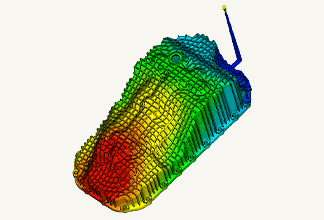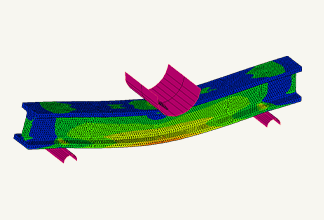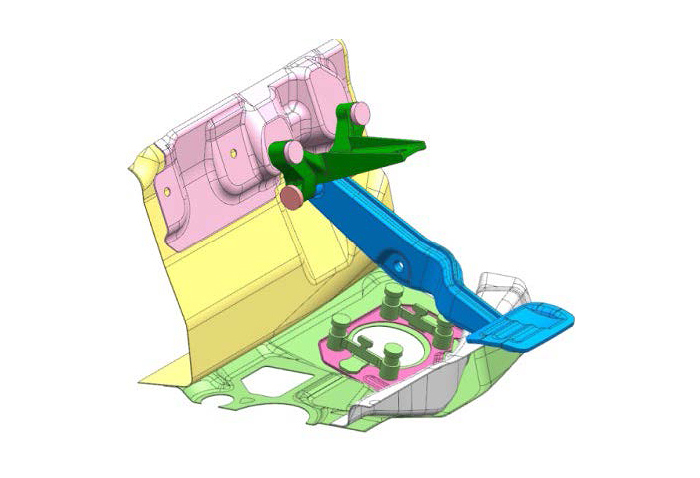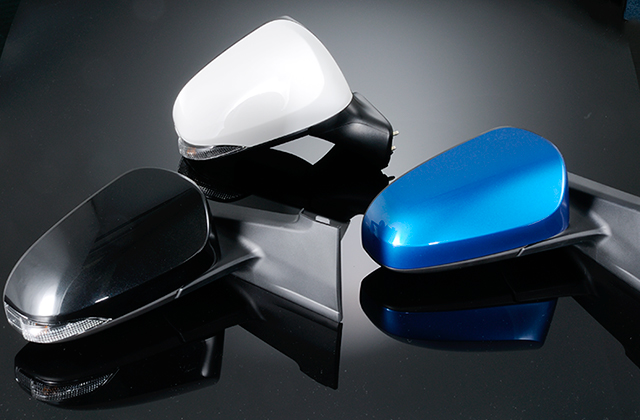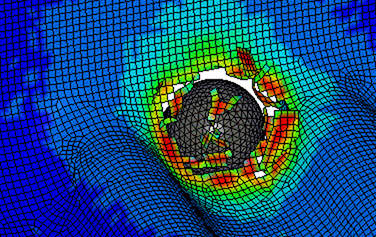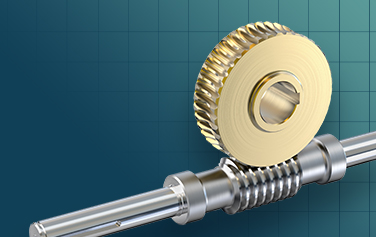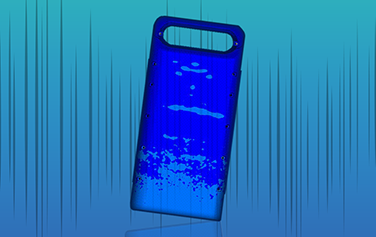- TOP
- 技術サポート
- Examples of CAE results
- Accuracy validation of warpage analysis : Oil pan

Injection molding analysis
Accuracy validation of impact analysis:Oil pan
Contents
Summary
- We validated the performance of a plastic oil pan whose weight was reduced by 60% from the original metal part through topology optimization.
- The warpage of the oil pan flange was actual measured and compared with the simulation results under the same injection molding conditions.In this analysis, we were able to obtain the high accuracy warpage model after molding by injection molding analysis.
-
Introduction
Reducing vehicle weight is crucial in reducing CO2 emissions for it directly impacts fuel economy.
We evaluated the performance of a plastic oil pan whose weight was reduced by 60% from the original metal part through
topology optimization. Flange warpage was evaluated because warped flanges not only pose challenges during assembly, but also could degrade its oil sealing capabilities .
In addition, since mechanical integrity is also important for oil pans, structural and impact analysis is most often performed.
In structural analysis and impact analysis, since warpage model obtained by injection molding analysis is used, it is of vital importance that the warpage model be highly accurate.
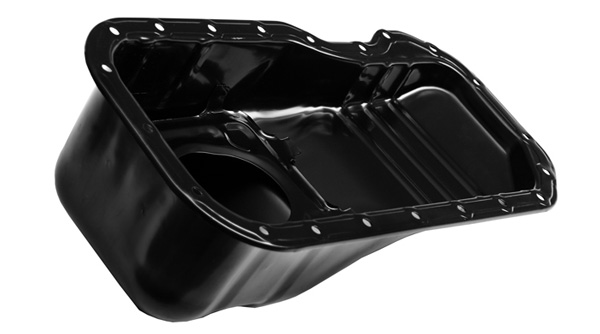
Fig.1 Oil pan
Purpose
Comparison between experimental and analytical results
Experimental method
Warpage of injection molded parts were obtained by using CNC three-dimensional measuring system. In this analysis, LEONATM14G33 (PA66, GF33%) was used.
When measuring warpage, a reference XY plane must be defined. This is called the anchor plane, which can be defined as a plane consisting of any three points (anchor points).
After defining the anchor plane, 48 points were measured at equal intervals at the flange and the Z-direction displacement were determined (Fig. 2). Z-direction displacement equals to the difference between the maximum displacement in the positive direction and the maximum displacement in the negative direction.
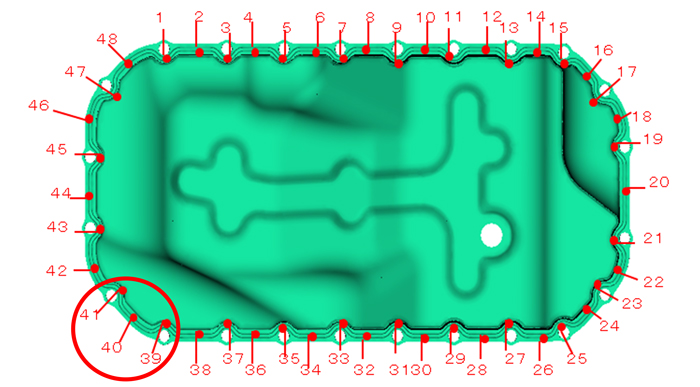
Fig.2 Measured points
Analysis
Warpage analysis was performed with Moldflow (Autodesk).
Warpage analysis can be performed under the same molding conditions as injection molding.
The analysis results are confirmed by calculating the Z-direction displacement.
We defined the same anchor plane as the actual measurement and determined the results (Fig. 3).
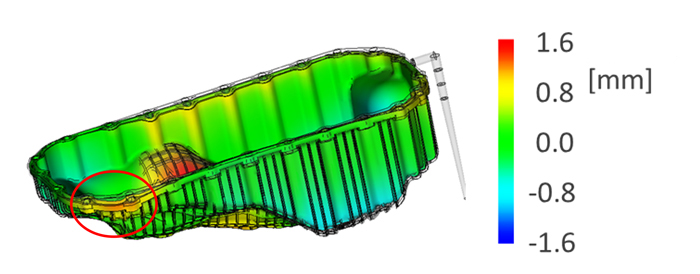
Fig.3 Z-direction displacement from analysis
Results
Fig 4 shows that the results of the CAE analysis and the actual measurement are well matched.
Because of the highly accurate result of warpage analysis, this model was used for impact analysis.
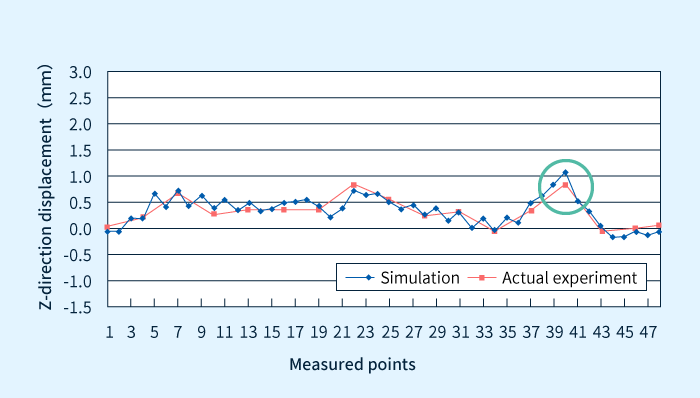
Fig.4 Comparison between experimental and analytical results
※Although this analysis reproduced the data with a high degree of accuracy, it does not necessarily mean that the analyzed values match the measured values in all cases.
※Although this analysis reproduced the data with a high degree of accuracy, it does not necessarily mean that the analyzed values match the measured values in all cases.
What is an oil pan?
A car engine is lubricated by engine oil, and the oil pan is an essential component for storing the engine oil.
It is attached to the bottom of the engine and has a trough in its design, called a sump, in which fluid is retained.
Engine oil is stored in the sump, and a pump sucks up the oil to lubricate all parts of the engine.
Since the oil pan is located under the vehicle, it is prone to get damaged from rock chipping. It must also withstand the temperature of the engine oil. For these reasons, heat resistance and impact strength are important material properties.
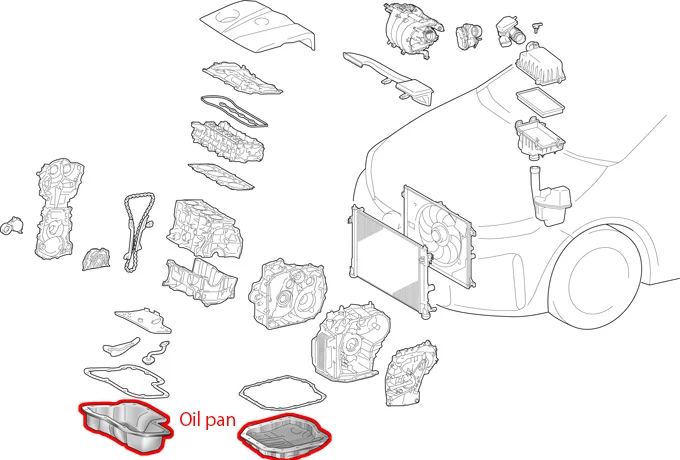
Fig.5 Engine compartment
Metal oil pans have been the norm, but resin oil pans are also being used recently as they meet performance requirements.
The biggest advantage of resin oil pans is weight reduction. Reducing vehicle weight directly impacts fuel economy.
It also offers benefits such as cost reductions due to faster molding cycles.
However, there is a disadvantage: once removed, it is slightly distorted and cannot be reused.
In addition, since resins go under creep deformation over time, gaskets and flange geometries must specifically be re-designed to meet the seal performance achieved in the metal oil pans.
To ensure that the plastic oil pans are designed appropriately, it is very important to simulate its behavior using CAE analysis.
We are able to perform a variety of analysis, including warpage analysis, structural analysis, impact analysis and others.
For more information about CAE, please contact us.
Inquiries


